04 Feb

Creating a resume is an essential part of a job application. The document should clearly summarize your credentials. At the same time, it should prove that you’re qualified for the position you’re applying for. A resume isn’t designed to get you a job right then and there. Instead, it’s meant to convince a potential employer to invite you for an interview. Luckily, there are many simple tricks you can use to make your resume stand out.
Writing a simple resume means it has to be all-encompassing, honest, and easy to digest. And if you’re hell-bent on landing that dream job, you can craft one with ease. Here are 10 must-do tips on writing a simple yet impressive resume.
1. Chronological Resume
The first tip on how to write a simple resume is to determine the format of the document you’re trying to create. One of the most traditional formats you could use is a chronological resume.
A chronological resume lists your work experience in reverse-chronological order, with your most recent job on top. This format is ideal to use if you want a potential employer to see the consistent advancement in your career.
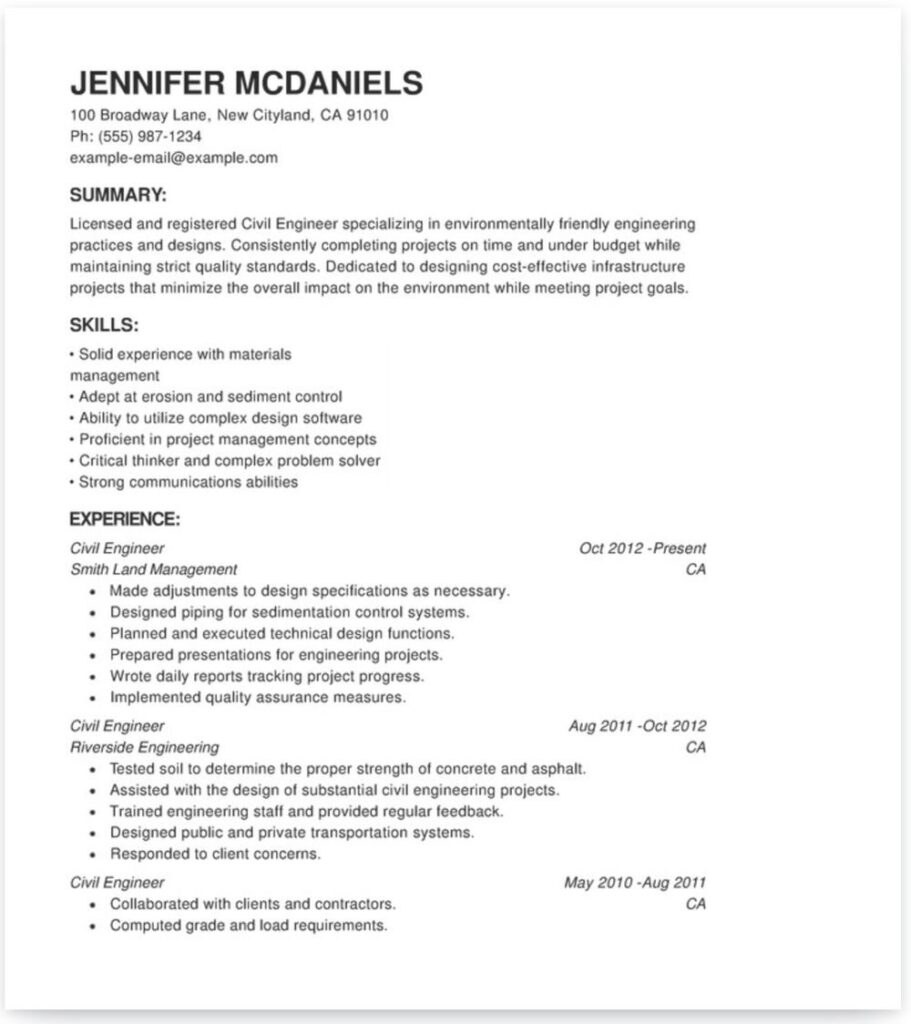
Check out this Engineering chronological resume example.
2. Functional Resume
If you have gaps in your professional history, a functional resume would be a preferred format than a chronological one.
A functional resume lists a person’s work experience categorized by skills. This format is the best format for applicants who are trying to change careers and they have little or no experience in the new industry they’re trying to penetrate.
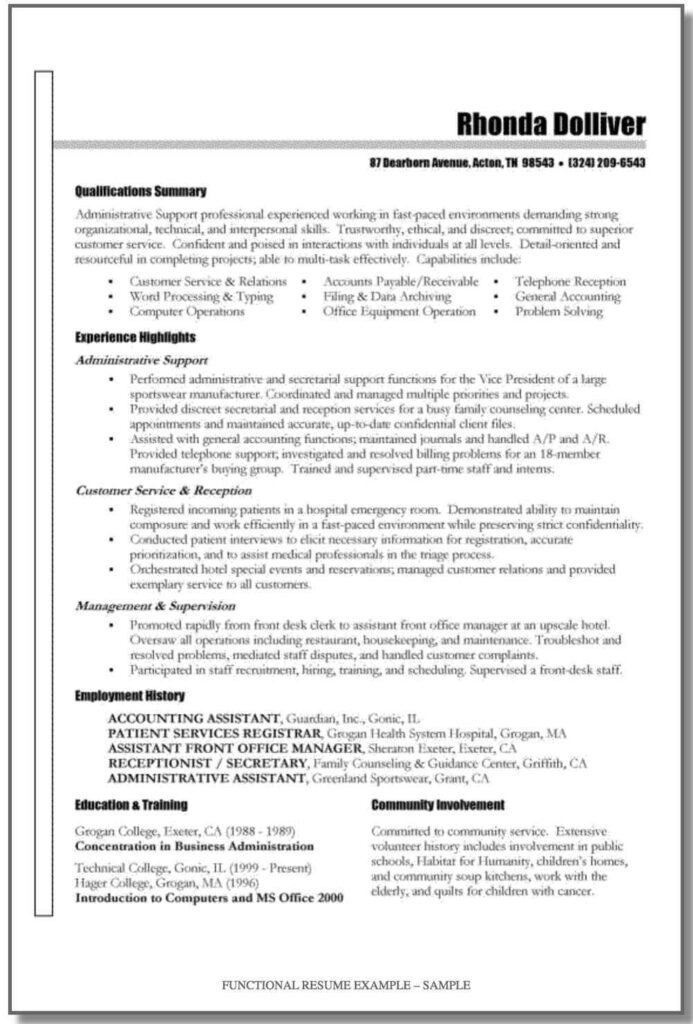
Check this example.
3. Combination Resume
For people who have a great deal of experience in a particular industry, a combination format can best highlight one’s skills and work experience.
As the name suggests, this format combines a chronological list of a person’s work experience while also putting the spotlight on one’s skills.
A combination resume wouldn’t be the best choice of format if an applicant is an entry-level candidate or does not have enough experience.
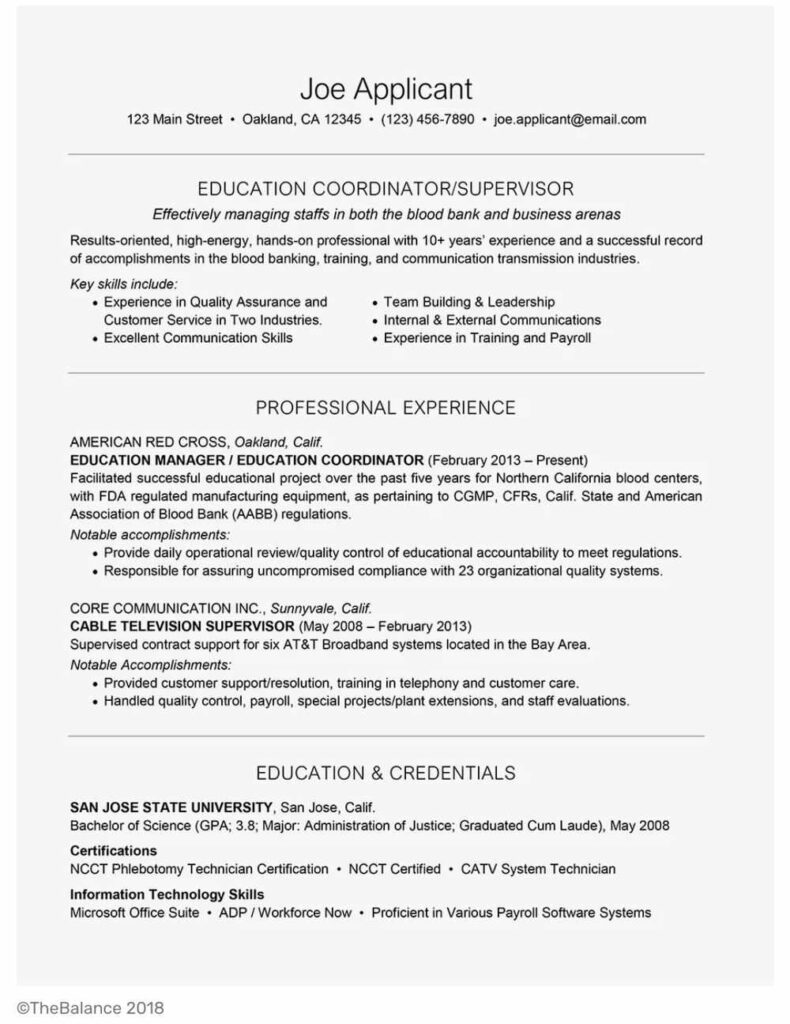
Here’s an example of a combination resume.
4. Contact Information
Clear contact information is crucial to allow the potential employer to contact you should you be considered for a job.
Be sure to include the following information in your resume: name, mailing address, telephone number, and email address. When applying for a job, it’s essential to have an email address that looks formal and professional.
Since LinkedIn has gained traction as a popular employment-oriented professional networking platform, you can include your account information if you have one.
It will also help to include a link to an online portfolio if it’s relevant to the position.
5. Resume Introduction
A resume introduction aims to catch the attention of the hiring officer and highlight your qualifications in a glance.
You can write a resume introduction using any of these three formats: a qualifications summary, career objective, and professional profile.
A qualifications summary is a bullet list of your most important professional credentials. A career objective is a short statement, usually two to three sentences, that expresses what you aim to achieve in your career.
A professional profile combines the features of a qualifications summary and a career objective. It can be written either in paragraph format or in bullet points.
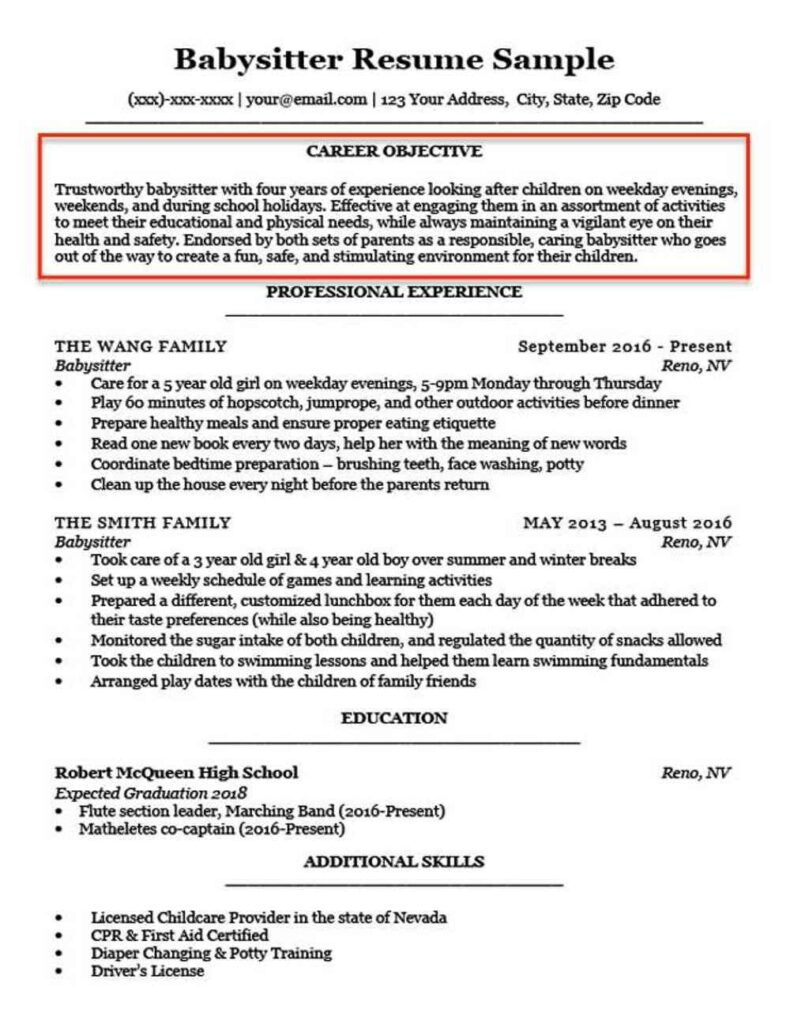
Here’s an objective example from a babysitter applicant.
6. Education
A person’s educational background is a significant part of how to write a simple resume, even for non-entry-level applicants.
Keep your education section clear and direct by providing the appropriate information. Some are the name of institution, location, month and year you graduated, and degree earned if any.
Including your general point average (GPA) is optional and could work to your resume’s advantage if it’s 3.0 and above.
However, GPA isn’t the be-all-end-all when applying for a job. If you had successful full-time jobs before, the recruiter can use those as a gauge if you’re fit for the position or not.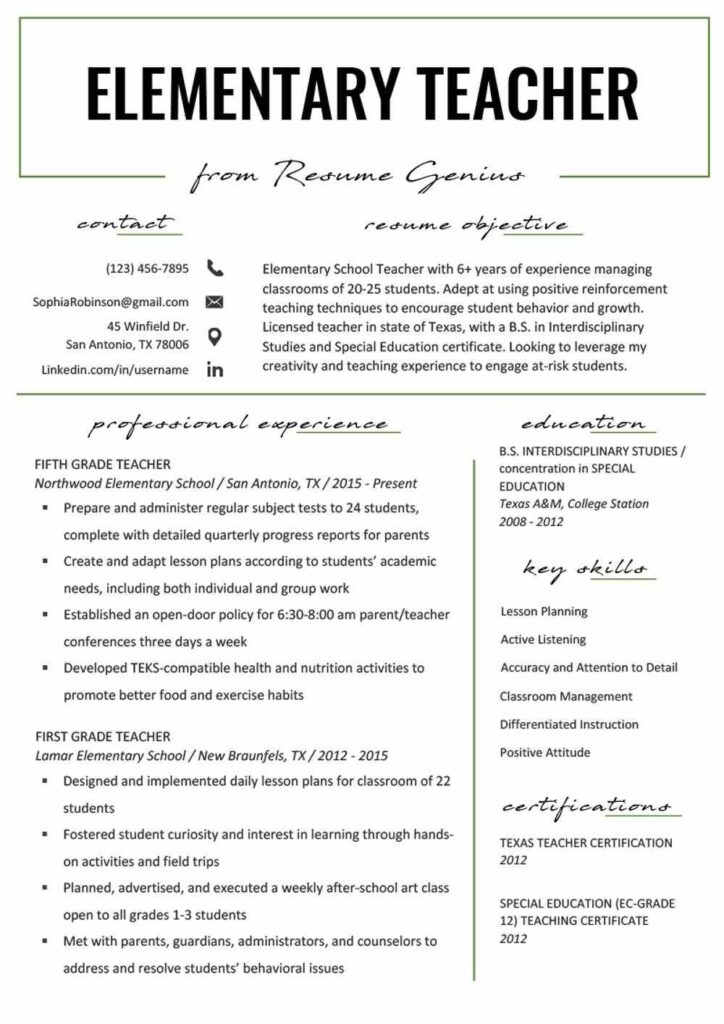
Here’s a teacher’s resume example citing the complete educational background.
7. Section Headers
Having section headers in your resume categorizes its contents into segments. This can immensely help a hiring officer to quickly find the information he or she might be looking for.
Make the headers easy to spot by using a bigger font or by bolding or underlining the title. Resume section headers usually include contact information, resume introduction (qualifications summary, career objective, or professional profile), work experience, skills, education, and awards and honors.
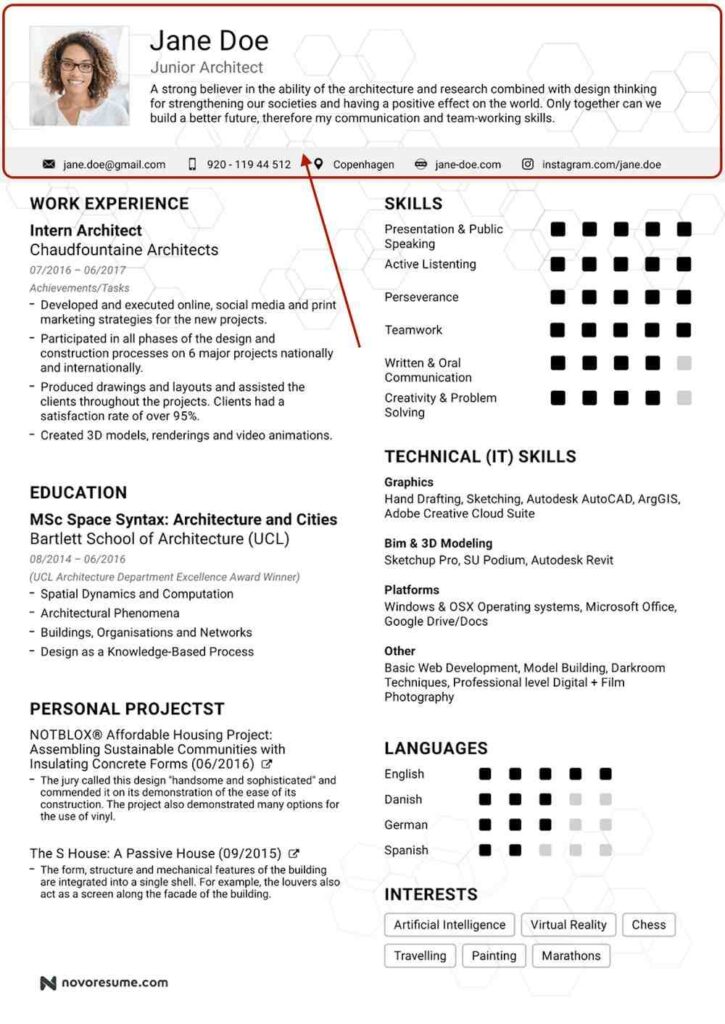
Check out this header example from an architect.
8. Bullet Points
Using bullet lists can make it easier for a hiring officer to digest the credentials and qualifications you’re highlighting to be considered for the job.
The rule of thumb is to use bullet points if you’re expressing three or more pieces of information. If the information is less than three, you can simply write it in sentence form.
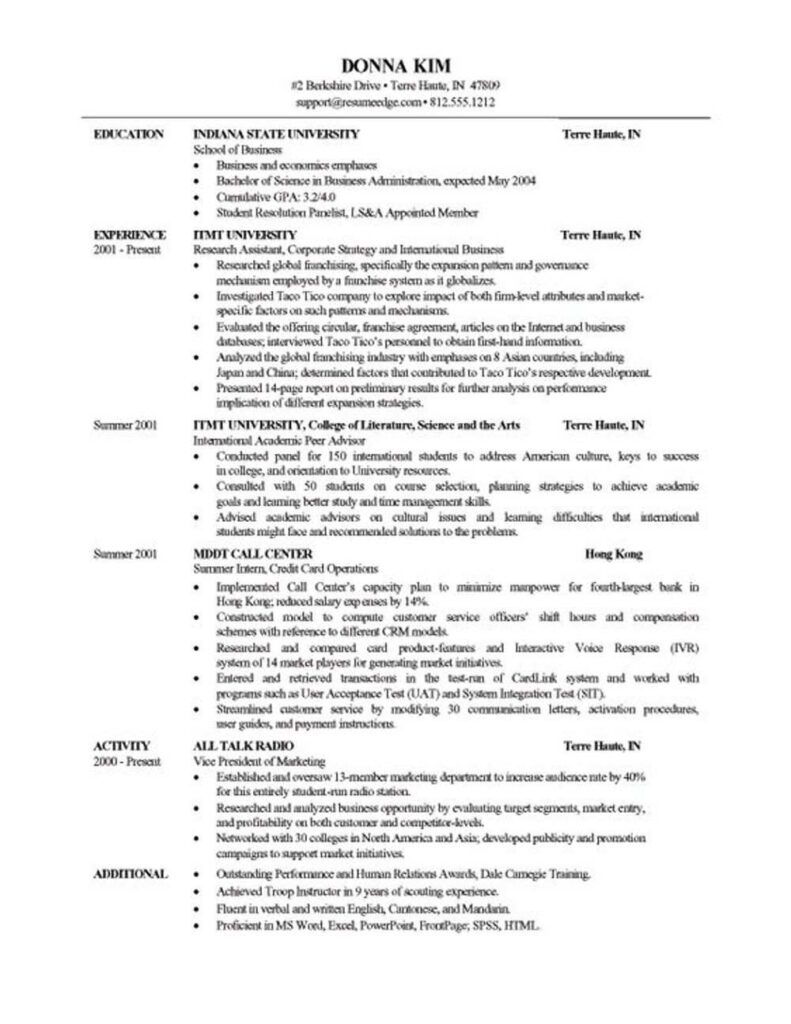
This clean and easy to digest resume is a perfect example.
9. Relevant Skills
Aside from your professional experience and educational background, the list of relevant skills that you put in your resume is a significant consideration for a potential employer. Because of this, it’s best to include hard and soft skills in your resume.
Hard skills are quantifiable abilities. Examples of hard skills are language fluency, software development, SEO and SEM, bookkeeping, and content management systems. In short, hard skills are concrete and measurable.
Soft skills, on the other hand, are traits that center on personality rather than ability. Soft skills may include initiative, self-motivation, willingness to learn, discipline and cultural intelligence.
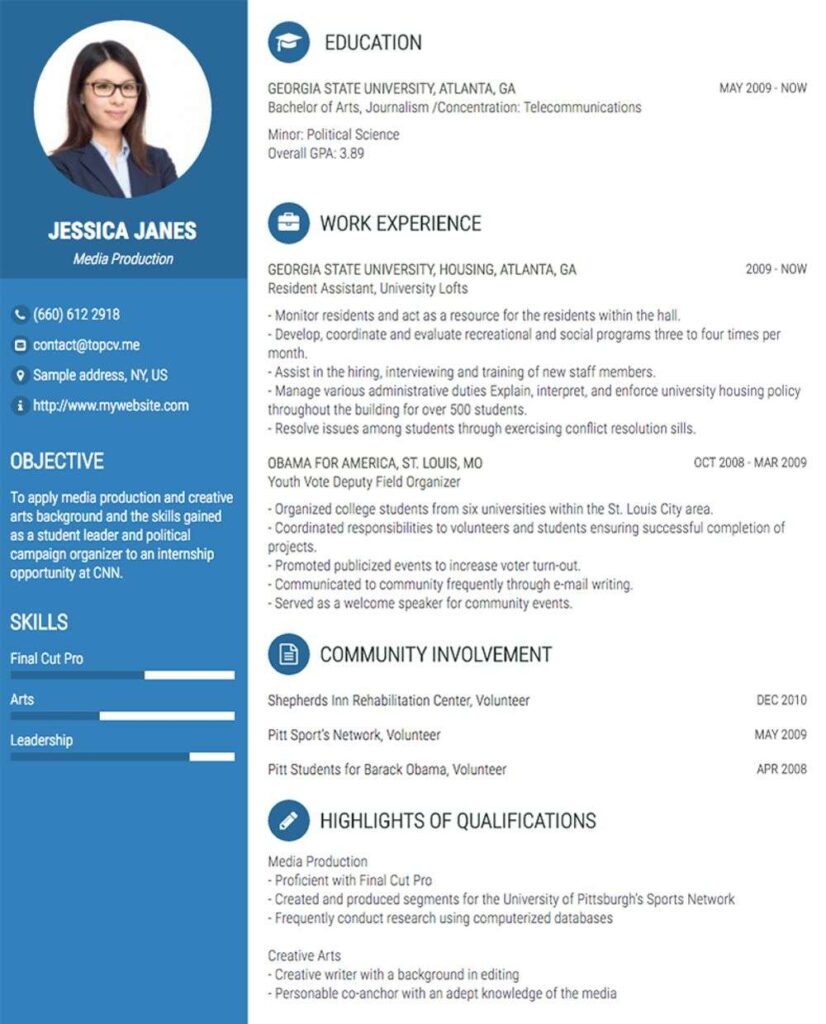
Learn a thing or two from this resume example.
10. Margin, Font, and Length
One of the most neglected steps on how to write a simple resume is putting thought into the margin, font, and length.
One inch on all sides is the standard margin for formal documents such as professional correspondence, reports, and resumes. Adjusting the margin is forgivable, as long as you keep it below 1.5 inches.
Font size should be within 10 to 12 points. The font style should be simple and look professional.
Career coach Steven Davis stresses the importance of font style. Hiring managers construct their first impression about an applicant based on the first few seconds they spend looking at a resume. He suggests the following font styles be used in resumes:
- Calibri
- Cambria
- Garamond
- Didot
- Georgia
- Helvetica
- Arial
- Book Antiqua
- Trebuchet MS
Some experts advise applicants to keep their resume at one page. Others also say it’s acceptable to add another page if the credentials and qualifications simply don’t fit. However, it’s a no-no to go beyond two pages. The key is to make the resume as short as succinct as possible, while still conveying an applicant’s worth.










